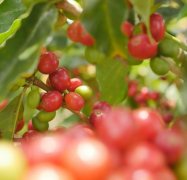Does Panamanian Coffee have only Rosa varieties? is Panamanian Coffee suitable for hanging ears?
Panamanian coffee arrived with European immigrants in the 19th century, about 50 years after the country's independence from Spain, but as an agricultural product, it did not really gain a foothold until, so to speak, the past 20 years. In contemporary Panama, coffee is mainly produced by small farmers from two main indigenous groups-the Bugle and the Ngobe-as well as from large and medium-sized estates that are usually privately owned by immigrants from Europe or North America or their descendants.
The microclimate of coffee-growing areas varies depending on soil quality (for example, volcanoes have considerable volcanic soil) and altitude (1000-1650 m), and there is often sufficient fresh water for processing.
The country itself has long attracted Europeans and North Americans to seek "idyllic" life in a beautiful, tropical and relatively stable Latin American country, along with high demand for real estate, relatively protective national labour and wage laws, and great influence from the global north, to make Panamanian coffee a more expensive coffee to produce and buy. In addition, Panama contributes little to the scale of global coffee production, and production has been declining over the past few years.
However, the mild silhouette and approachable sweetness / nutty taste of coffee continue to attract fans as a good foil to the higher silhouette and more vibrant acidity of other Central American coffee.

Geisha
Since the early 2000s, the words Panama and Geisha have become almost synonymous: the breed has been "rediscovered" on the now famous Hacienda La Esmeralda farm in Boquete, which is owned by the Peterson family. In 2004, the Petersons selected and separated geisha cherries on their farm and let them take part in the Panamanian flavor contest: they soon attracted the attention of the entire boutique coffee world. Soon the price of a geisha from Esmeralda was as high as $140 per pound and won green in private online auctions.
Geisha's amazing success for Esmeralda has naturally inspired other producers to separate their varieties, even planting new Geisha trees on farms that used to have only Caturra and Bourbon. Geisha also spread from Panama to other producing countries, where enterprising farmers wanted to take advantage of the name and the obvious scent of flowers, tea, and delicate contours.
In addition to the famous summer roses, there are Kaddura and Kaduai coffee beans, a Panamanian Diamond Hill coffee from Front Street coffee, which belongs to Kaddura and Kaduai, with citrus, berry, honey, cocoa and fermented aromas. The other is the Panamanian butterfly, also belongs to the Panamanian rose summer coffee, its varieties are rose summer and Kaddura Kaduai, used to make hanging ear coffee, is one of the more cost-effective beans that can drink the flavor of the rose summer variety.
Important Notice :
前街咖啡 FrontStreet Coffee has moved to new addredd:
FrontStreet Coffee Address: 315,Donghua East Road,GuangZhou
Tel:020 38364473
- Prev

People who don't know coffee should choose what kind of coffee should people who haven't had coffee recommend?
Whether you are a coffee novice or someone who doesn't like coffee, Qianjie Coffee recommends the following list of coffee drinks. Most of these drinks contain coffee. What is the best coffee choice that you don't know about coffee or that you haven't had coffee before? For those who do not understand coffee, in addition to hand-brewed coffee in boutique coffee, the best coffee drinks are latte, mocha and ma.
- Next

Adverse conditions for Burundian Coffee Export how are Burundian coffee micro-batches exported
Coffee production in Burundi is like a roller coaster: during the country's time as a Belgian colony, coffee was a cash crop that was mainly exported to Europe or met European demand for coffee in other colonies. Under Belgian rule, Burundian farmers were forced to plant a certain number of coffee trees each, of course, with little money or recognition for their work. The country is in
Related
- Beginners will see the "Coffee pull flower" guide!
- What is the difference between ice blog purified milk and ordinary milk coffee?
- Why is the Philippines the largest producer of crops in Liberia?
- For coffee extraction, should the fine powder be retained?
- How does extracted espresso fill pressed powder? How much strength does it take to press the powder?
- How to make jasmine cold extract coffee? Is the jasmine + latte good?
- Will this little toy really make the coffee taste better? How does Lily Drip affect coffee extraction?
- Will the action of slapping the filter cup also affect coffee extraction?
- What's the difference between powder-to-water ratio and powder-to-liquid ratio?
- What is the Ethiopian local species? What does it have to do with Heirloom native species?

